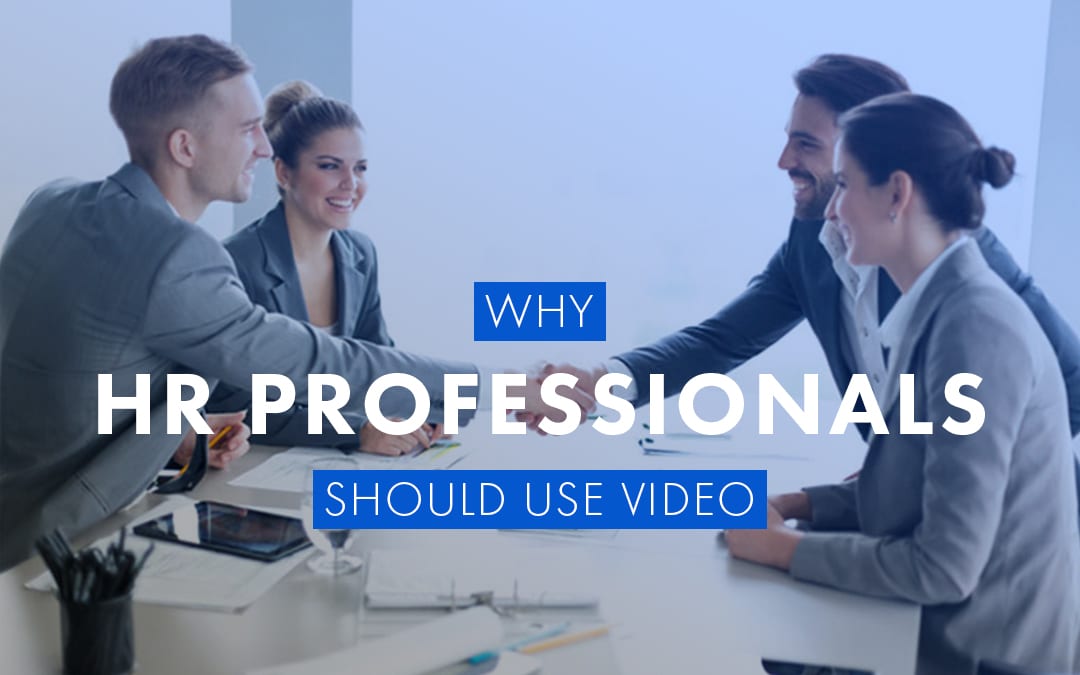We have been consuming information in many ways throughout our evolution, from scripts to radio to television and now in the digital age, online videos as well. Videos are proven to be thriving in the cyberspace with videos being predicted to make up 82% of internet traffic by 2021. [1]
However, not long ago, companies perceive videos as an optional mean to accomplish communication purposes. They were a splurge mainly for marketing departments with massive budgets. Meanwhile, the learning and development departments had only canned, off-the-shelf videos to draw from. Moreover, because producing and editing them was time-consuming and costly, videos were developed to have long shelf-lives.
Today, reality looks far different. The rise of portable video viewers (mobile phones), always-on technology has led to video becoming a necessary element of any successful strategy to motivate and inform in ways that yield real business results. Video is no longer a choice.
There are numerous reasons for their success. Not only are they engaging, relatable, but their range of allocation also is diverse and not bound to one specific target group. Formats include explainer videos, animated storytelling videos, tutorials and more! This is just one of the reasons why corporations and organisations are using videos in their internal and external communication plans.
Within a company, videos not only assist marketing teams, but they also do the trick for Human Resources professionals. After all, video can be a learning substitute for remote workers and large scale training. Moreover, if there is a department that is all about people, it is Human Resources. If you are part of the HR team, you may already be using video to attract talent or convey messages to employees, and maybe you have incorporated a video on your HR communication already. If you haven’t, here’s why HR professionals should use video.
.
Branding
The company’s image is of tremendous interest when it comes to attracting new employees, satisfying current employees and creating an engaging and meaningful working environment.
Working a positive environment and bridging human and corporate bridges are part of the strategic responsibilities of HR professionals. By having explainer videos, they can assist you in introducing your company, your CEO, or mission, vision, and history in an engaging, appealing, and reachable way.
From our previous article, it was mentioned that videos are memorable with viewers retaining 95% of a video’s message, making it easier for brand recognition. [2]
Instant recognition is powerful, and to achieve it, the company must be unique and at the top of its game. Why not use video to do just that?
https://www.youtube.com/watch?v=Fq2KoJfnKKc
Netflix created a YouTube channel called WeAreNetflix, where they share video contents involving their staffs, showcasing their company culture and environment.
.
Recruitment
Implementing videos in HR recruitment is undoubtedly a common practice nowadays, but did you know what the benefits are?
One significant advantage is that you will attract exposure to your postings and more candidates! A survey has found that job postings with videos are viewed 12% more and have a 34% greater application rate than postings without video. [3]
Cultural fit is also essential when it comes to recruiting as 80% of employee turnover can be associated with flaws in the hiring process, according to a Harvard study. [4]
Hence, companies that do not hesitate to show their true colours through video ensure they attract the type of candidate that match that vision and culture.
https://www.youtube.com/watch?v=f9psILoYmCc
The New Zealand Police made an entertaining and persuasive ad for their recruitment.
.
Internal Communication
When asked what employees look for in a great internal communications strategy, they stated that they want comms to be real-time, which is mobile, and have a similar experience to the social media platforms they use every day in their private lives. [5]
Generations who are raised with YouTube, Millennials and Gen Z account for slightly over a third of the workforce (38 per cent) currently. In the next decade, that number is set to shoot up to 58 per cent, making the youthful generations the most dominant in the workplace. [6]
Therefore, Human resource professionals need to look beyond the traditional forms of communication, such as emails and start introducing practices that will not only appeal to employees but engage them.
Video provides a compelling and thorough connection with employees that increases the message’s impact and emotional reactions to news and other information.
.
Closing thoughts
We hope that these facts help you in including storytelling into your communication strategy. If you ever feel lost or unsure, know that we here at Gram are glad to help.
Videos can considerably aid HR professionals in reaching out to potential candidates and communicate better with their employees, especially the growing workforce of the digital generations who’s been consuming online videos since young.
Enjoyed reading this article? Read Gram’s article about 5 Reasons Why Storytelling is the Best Form of Communication here.
Sources:
[1] https://www.businessinsider.com/heres-how-much-ip-traffic-will-be-video-by-2021-2017-6?IR=T
[4] https://www.linkedin.com/pulse/whats-cost-bad-hiring-decision-brian-fink/
[5] https://resources.speakap.com/en/technology-managing-employees



